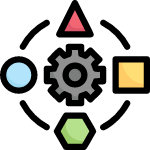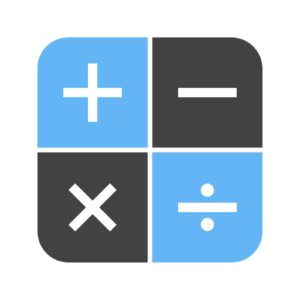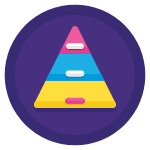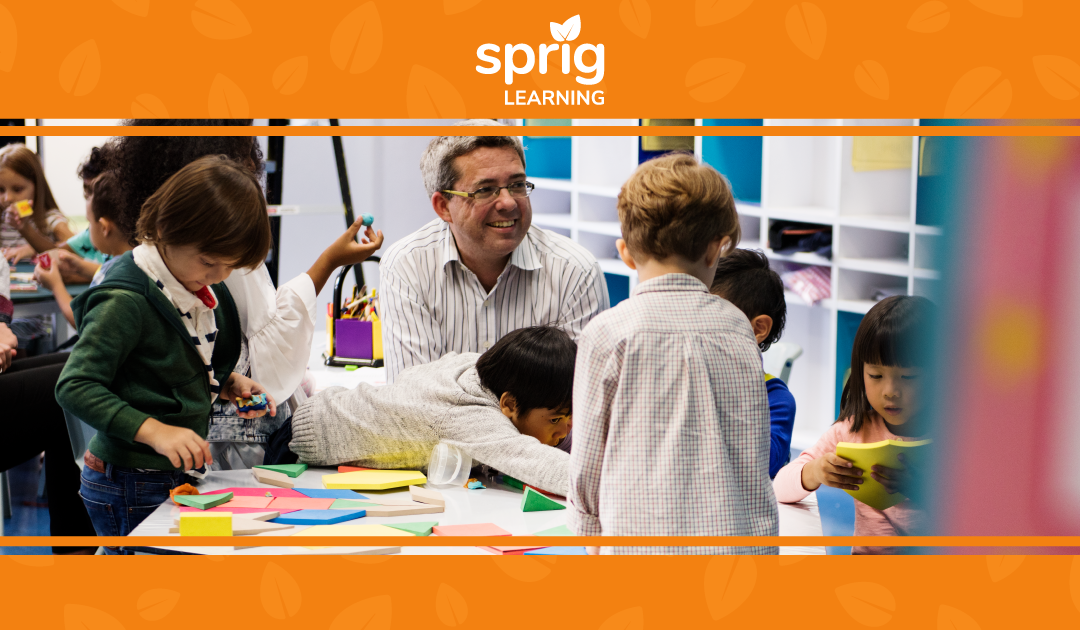Learning math is a fundamental part of early childhood education. It’s why Sprig offers the Sprig Math program, to pair Sprig Language in teaching early numeracy and literacy respectively.
To ensure every child has a fair shot at success, both core subjects of language and math are fundamental and must be taught well. They complement each other.
Making sense of oral language helps to learn math concepts by understanding what is being said or instructed.
Math also builds reasoning, which increases comprehension, including language comprehension.
The two subjects are so interconnected that language and math learning difficulties tend to coincide in primary school. There is also evidence to show that it’s more difficult to overcome a math learning gap than it is to overcome a language learning gap.
In a study on school readiness and later achievement, it’s said that early math skills have even greater predictive power than reading and attention skills, when it comes to determining success.
Given math is such an integral part of early childhood education, we wanted to do a comprehensive roundup of all strategies written on this topic.
We present them in this article.
The Many Strategies for Teaching Early Math Skills

There are numerous strategies for teaching early math, and they have varying degrees of shared characteristics.
We reviewed many different strategies (from multiple sources) to arrive at this list of 20 math strategies. Their overlaps are minimized.
From Many to The Best

- Use Repetition to Build Familiarity: Although the most basic strategy in this list, it is still very popular in teaching students early math. Through repeated practice, early learners get to practice skills such as anticipation, prediction, and cause and effect.

- Start by Counting: Counting is one of the most common activities in teaching early math skills. Due to its prevalence, it can be thought of as a strategy. Instead of counting by rote, it’s better to develop quantity sense. Counting is reinforced in many literacy lessons, as well as everyday life situations.

- Do Hands-on activities: Abstract concepts in math can be difficult to absorb for early learners. Doing activities with manipulatives, blocks, relational rods or clay are helpful to visualize these concepts. These methods of learning math are the first step of the concrete, pictorial, abstract approach to learning math.

- Use Graphics To Engage and Explore: Using colourful moving images, catchy sound effects and songs engages students in learning. Static images are good for demonstrating math concepts, but moving visuals accompanied by audio are even better. They support deeper thinking about the mathematical concepts in which they are engaged.

- Differentiate Learning via Technology: Most teachers use some sort of differentiation tactic to teach their students. Technology amplifies this differentiation capability, by 1) keeping track of student profiles to see what they have completed 2) offering a chance to those students who are more adept at learning on-screen.

- Ask Early Learners To Explain Concepts: It’s good to ask students how they want to solve a problem or what strategies they are thinking about. It develops meta-cognition, which is an important aspect of learning early math.

- Implement Storytelling: Stories capture the imagination and keep kids engaged. Real-life scenario problems told through stories help kids understand the practicality of math. Fictional stories also grab their attention to look at a problem closely, and the use of characters engages them to solve a problem.

- Provide Feedback: Addressing learning gaps also involves fixing errors so they don’t turn into bad habits in the learning process. While a strength-based approach helps students to learn in their preferred styles, it’s equally important to correct mistakes when they do happen.

- Develop a Positive Attitude: It’s easier and more enjoyable to learn math if the students believe that they can succeed. It’s beneficial for students if they develop a positive identity and attitude when it comes to learning math. It’s important to reward and praise students when they do well, so they are encouraged to learn more.

- Play Games: Playing games is one of the ways to make math learning fun. Research shows that playing with puzzles, blocks, and cards all enhance math skills in the early years. Interactive digital games take it one step further in engaging students and increasing learning gains.

- Use Schema and Patterns: Recognizing patterns, making connections, and predicting sequences are all things that occur when children learn from recurring designs, or patterns. Once kids at an early age figure out the schema, or the underlying pattern behind a math concept, it’s easier for them to learn.

12. Use Developmental Progression: Children have some innate abilities to recognize patterns and to count at an early stage. Developmental progression uses such abilities to build a platform from which more advanced mathematical operations can be taught.

13. Formatively Assess: Monitor progress of what every student has learned. Determine their current level of math knowledge and differentiate instruction accordingly. A formative assessment tool can inform instruction by monitoring progress for each student. It’s helpful for pacing instruction according to the curricular outcomes at the end of the year.

- Connect Math to Other Learning Areas: Encourage students who see and explain their world in mathematical terms. Introduce general concepts informally, before formally connecting those concepts to formal math vocabulary. Students become more invested in learning math when they see how it is connected to the world around them.

15. Encourage Math Talk: Bring up math in every situation, so students can practice applying the learned knowledge and concepts. Verbalizing mathematical thinking gives students greater understanding and awareness of their own problem-solving skills.

16. Set Time Aside For Math: Schools have learning blocks dedicated to math, so this strategy is well practiced. But it is extremely important nonetheless to reserve time for teaching math. It should be something that kids look forward to and not dread.

17. Set Up Cooperative Learning: It’s possible to learn math alone, but working together in a pair, or in a group with many other students are also great options. Students get to learn from each other and brainstorm problem solving ideas as a group. Teaching others leads to high retention of a math skill. It’s best to pick groups that are of mixed ability.

18. Promote Teacher Collaboration: Teacher collaboration, or collaborative planning, is one of the major markers of high-quality differentiated instruction. It’s no different in teaching math. Collaborating with other teachers, coaches or specialists improves instruction skills and helps to plan more effective lessons.Furthermore, teacher collaboration helps to build the right math culture in early learning, where math ideas are made fun, and are treated as concepts to be discussed and reasoned through.

- Support Independent Practice: Scaffolding can be used to teach math, but not to the extent where it hampers independent learning of a certain skill or concept. There should be enough opportunities provided to the student to demonstrate their understanding.

- Work on the Foundational Skills: Early math foundation includes number sense, representation, spatial sense, measurement, estimation and patterns and problem solving. There are many early childhood math activities for each of these learning areas. There are tools available that map such activities to their respective learning outcome. Sprig Math goes one step beyond this, and maps activities to the underlying math learning processes as well.
Teaching Early Math Strategy Takeaways

Going over the 20 strategies mentioned above, there are some themes that can be observed.
- Focus on existing math ability
- Sense of belonging in the classroom
- Math’s connection to the world around us
- Maximization of potential according to math interests
Math teachers do a lot when it comes to achieving these objectives!
They meet students at the level they are in, show them how math can be fun and relevant, and provide ample opportunities for them to develop as early math learners.
With technology specifically meant for early math, it acts as a force multiplier to the work teachers already do.
Students who take part in technology-based adaptive math programs score higher on all math strands in assessment, compared to those students who do not take part. There is a clear advantage to be gained in tailoring math instruction with the help of technology.
If there is any strategy in this article that you need help with ideating, implementing or measuring, feel free to reach out to us. Sprig Learning built Sprig Math specifically for early math learners.

